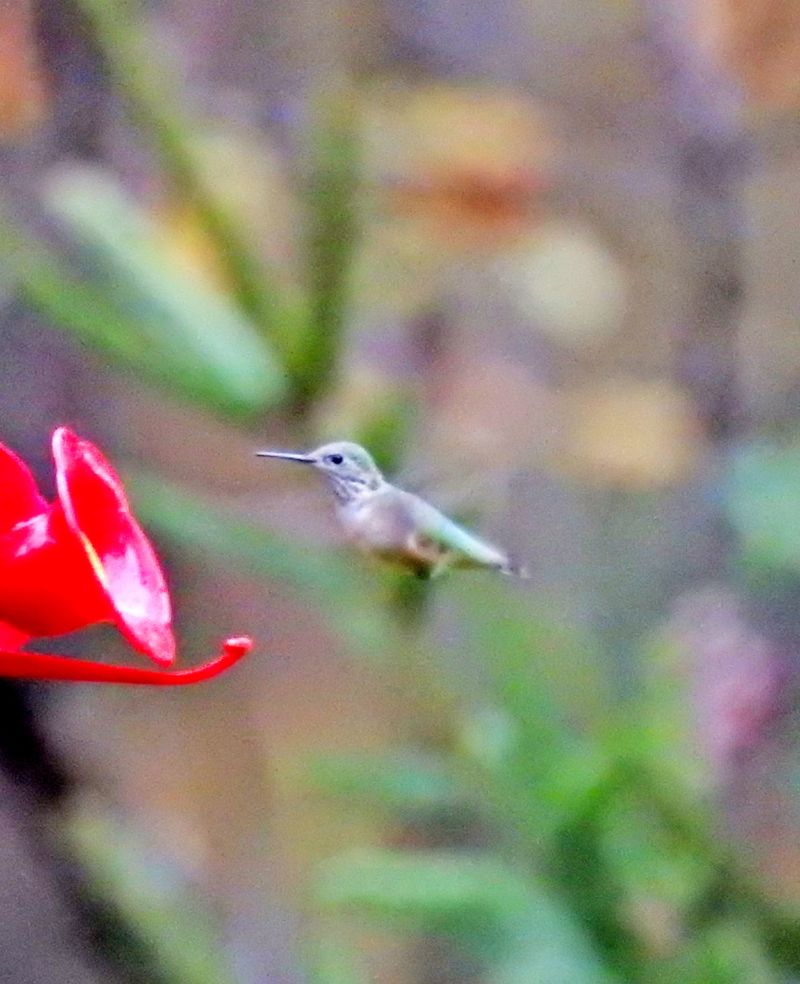A calliope hummingbird visits a feeder near Delaware, Ohio
- Michelle Wood: SWCD
- November 9, 2017
- 1452
I had just returned from a short birding trip to Indiana Dunes State Park when two Ohio birders contacted me about the appearance of a calliope hummingbird in Ohio. The hummer had first been identified as a rufous hummingbird until someone took a closer look at photos of the bird.
As is often the case, the landowners were glad to share their rare bird, suggesting that people could come the next day. After talking to Larry Roche in Kent, I agreed to meet him the next morning. My early-morning drive went well, and soon after 8 a.m., I pulled up to the residence, located a few miles southwest of Delaware. Kent Miller from Hartville was already there, and the calliope was perched on a wire next to the hummingbird feeder.
The morning was cloudy with occasional drizzle. Larry and other birders arrived, and the star of the show was almost always readily visible. The bird sometimes briefly visited the feeder but most of the time stayed close by on the wire that supported the feeder.
There has been only one previous record of a calliope hummingbird in Ohio, and in that case almost no birders were able to view the bird, so this was a first for almost every birder in the state.
Calliope hummingbirds spend their summers in the western mountains of the United States and up into Central British Columbia and Western Alberta. By August or September they migrate south into Southwestern Mexico, although every fall a few find their way to the southeastern states of our country. There also are a few records of calliopes further north and east, as far as Minnesota and New Jersey. The most likely time for such sightings is in October and November.
This little hummingbird is the smallest North American breeding bird. Very distinctive is the short tail. In photos the wings almost always look like they extend past the tail, unlike other similar species such as the rufous hummingbird. While we were watching the calliope, we noticed how small and short-tailed the bird looked.
Steve N.G. Howell, in his book, "Hummingbirds of North America," states that “calliopes are relatively low-key and quiet, rarely detected by sounds, except for displaying males”.
This calliope appeared to be an immature male, displaying a lot of streaking on the throat, which will develop into the amazing red-violet gorget distinctive among U.S. hummingbirds. It will be interesting to see how long the bird stays here because most stray western hummers tend to leave later in November or December, after which they may well head south to the panhandle of Florida or further west along the Gulf Coast before flying back to their western mountain territories in the spring.
As of Nov. 7, the calliope was still present at Delaware, entertaining visitors and making practice display flights.
An excellent find locally was Wayne County’s first brant, located along Wilderness Road in the Funk Bottoms Wildlife Area on Nov. 2 by Su Snyder and Sue Evanoff. A rufous hummingbird continued to be seen south of Loudonville.
For more information on these and other sightings, check the online birding sites or call the Bobolink Area Bird Hotline at 574-642-1335.
Good birding!
Contact Bruce Glick at birderbruce@yahoo.com or 330-317-7798.




